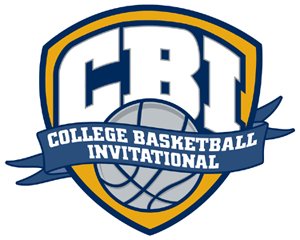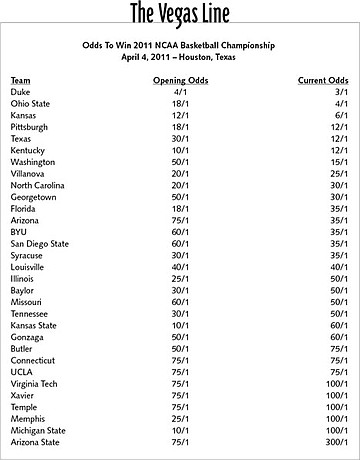 Facebook
Facebook
 X
X
 Instagram
Instagram
 TikTok
TikTok
 Youtube
Youtube

Readers ask, “Why don’t we have more postseason basketball tournaments?” I understand the need lurking behind that question. And the pain.
Now, it’s true, except for the Ivy League, every Division I basketball conference has a tournament at the end of its regular season, so college BB already has a post-regular-season tournament, namely, the (insert name here) conference championship tournament. And I feel good about that.
But, we need more. And more was given. The National Invitation Tournament (NIT), founded in 1938, used to be the preeminent post-postseason basketball tournament but long ago shrunk in stature until it was absorbed, by way of money delivered unto them in a paper bag by — wait for it — the NCAA. Why the NCAA needs to own another post-postseason basketball tournament is a curious question having to do with an NIT antitrust lawsuit, but no matter, they do. What matters to us is the NCAA-owned NIT puts on a 32-team post-postseason basketball tournament.
The Goldman Sachs of college-basketball tournaments is the NCAA Men’s Division I Basketball Championship, known to people who hate the English language as March Madness. Few stop to consider this tournament consists of a laughable 68 teams. It could be 1000 teams or 500 teams, but no, 68 teams are what we get. Add the NCAA-owned NIT with their 32 teams and, bingo, NCAA Inc. has 100 teams of product to peddle to CBS, TNT, TBS, and TruTV.
It’s a nice business: CBS and Turner Sports are paying the NCAA $771 million a year for its March Madness product. TBS is owned by Time Warner. TNT is owned by the Turner Broadcasting System, which is owned by Time Warner. Ditto truTV. So, American post-postseason basketball is presented (or locked up, depending on your point of view) by two happy-go-lucky conglomerates, CBS and Time Warner/TBS/TNT/TruTV.
That’s fun. That’s a good time. Let loose the balloons and blow the party whistles. The 100-team product is out on the basketball court, broadcast live and nationwide. But then what? What happens then, people?
There are 347 NCAA Division I basketball teams. The NCAA owns 100 of them. What, may I ask, are 247 Division I basketball teams going to do without their post-postseason? And how about fans? What will they do, where will they go to fulfill their sporting needs?
Let’s deal with this right now. Time Warner has plenty of networks left in their shopping cart able to broadcast post-postseason basketball. In fact, CBS and Time Warner’s love child, Turner Sports, co-own the CW Network, making CW a natural post-postseason broadcaster. Happily, almost magically, there are two post-postseason basketball tournaments already up, running, and ready to join the team.
Senior is the College Basketball Invitational (CBI), now in its fourth year. It’s a post-postseason Division I basketball tournament, fields 16 teams that didn’t get invited to the NCAA or NIT tournaments. CBI’s tournament begins March 15. Games are played on college campuses in a single-elimination format, until the championship round, which is a best-of-three series. The CBI is broadcast by HDNet, surely an ideal candidate to be brought into the family firm.
Like the NCAA tournaments, CBI is a straight-up corporate event, currently owned by the Gazelle Group, which, according to their website, “...has the expertise and is committed to developing prioritized business plans that achieve its clients’ marketing and financial goals,” which is mealymouth for “We’ll do anything for a buck.”
Finally, there is the CollegeInsider.com (CIT) post-postseason tournament. This will be their third go-around, also starts March 15, also fields 16 teams, also plays on college campuses. The Great West Conference tournament winner gets an automatic bid.
Some of their games will be streamed on b2tv.com, which sounds like it’s run out of a college dorm, but you’ll recognize most 2010 participants, to wit: Harvard, Louisiana Tech, George Mason, Creighton, Appalachian State, Portland, Missouri State, and Loyola Marymount.
CollegeInsider.com began life in 1995 as a regional newsletter (hey, the NFL began its life in a Canton, Ohio, Hupmobile dealership). Click to the “About” section on their website and you’ll come across, “In the July 27, 1998, issue of ESPN the Magazine, collegeinsider.com was ranked No. 24 on the magazine’s list of 99 things to do before you die.”
One wonders, what was number 23, “Check out the new toppings at In-N-Out Burger”? The fact that this blurb is still playing 13 years after it was published tells you these people are too busy building an empire to waste their time basking in praise from last century’s dead media.
Bottom Line. We have raised the bar to 132 teams in the post-postseason. Damn fine work, everyone.



Readers ask, “Why don’t we have more postseason basketball tournaments?” I understand the need lurking behind that question. And the pain.
Now, it’s true, except for the Ivy League, every Division I basketball conference has a tournament at the end of its regular season, so college BB already has a post-regular-season tournament, namely, the (insert name here) conference championship tournament. And I feel good about that.
But, we need more. And more was given. The National Invitation Tournament (NIT), founded in 1938, used to be the preeminent post-postseason basketball tournament but long ago shrunk in stature until it was absorbed, by way of money delivered unto them in a paper bag by — wait for it — the NCAA. Why the NCAA needs to own another post-postseason basketball tournament is a curious question having to do with an NIT antitrust lawsuit, but no matter, they do. What matters to us is the NCAA-owned NIT puts on a 32-team post-postseason basketball tournament.
The Goldman Sachs of college-basketball tournaments is the NCAA Men’s Division I Basketball Championship, known to people who hate the English language as March Madness. Few stop to consider this tournament consists of a laughable 68 teams. It could be 1000 teams or 500 teams, but no, 68 teams are what we get. Add the NCAA-owned NIT with their 32 teams and, bingo, NCAA Inc. has 100 teams of product to peddle to CBS, TNT, TBS, and TruTV.
It’s a nice business: CBS and Turner Sports are paying the NCAA $771 million a year for its March Madness product. TBS is owned by Time Warner. TNT is owned by the Turner Broadcasting System, which is owned by Time Warner. Ditto truTV. So, American post-postseason basketball is presented (or locked up, depending on your point of view) by two happy-go-lucky conglomerates, CBS and Time Warner/TBS/TNT/TruTV.
That’s fun. That’s a good time. Let loose the balloons and blow the party whistles. The 100-team product is out on the basketball court, broadcast live and nationwide. But then what? What happens then, people?
There are 347 NCAA Division I basketball teams. The NCAA owns 100 of them. What, may I ask, are 247 Division I basketball teams going to do without their post-postseason? And how about fans? What will they do, where will they go to fulfill their sporting needs?
Let’s deal with this right now. Time Warner has plenty of networks left in their shopping cart able to broadcast post-postseason basketball. In fact, CBS and Time Warner’s love child, Turner Sports, co-own the CW Network, making CW a natural post-postseason broadcaster. Happily, almost magically, there are two post-postseason basketball tournaments already up, running, and ready to join the team.
Senior is the College Basketball Invitational (CBI), now in its fourth year. It’s a post-postseason Division I basketball tournament, fields 16 teams that didn’t get invited to the NCAA or NIT tournaments. CBI’s tournament begins March 15. Games are played on college campuses in a single-elimination format, until the championship round, which is a best-of-three series. The CBI is broadcast by HDNet, surely an ideal candidate to be brought into the family firm.
Like the NCAA tournaments, CBI is a straight-up corporate event, currently owned by the Gazelle Group, which, according to their website, “...has the expertise and is committed to developing prioritized business plans that achieve its clients’ marketing and financial goals,” which is mealymouth for “We’ll do anything for a buck.”
Finally, there is the CollegeInsider.com (CIT) post-postseason tournament. This will be their third go-around, also starts March 15, also fields 16 teams, also plays on college campuses. The Great West Conference tournament winner gets an automatic bid.
Some of their games will be streamed on b2tv.com, which sounds like it’s run out of a college dorm, but you’ll recognize most 2010 participants, to wit: Harvard, Louisiana Tech, George Mason, Creighton, Appalachian State, Portland, Missouri State, and Loyola Marymount.
CollegeInsider.com began life in 1995 as a regional newsletter (hey, the NFL began its life in a Canton, Ohio, Hupmobile dealership). Click to the “About” section on their website and you’ll come across, “In the July 27, 1998, issue of ESPN the Magazine, collegeinsider.com was ranked No. 24 on the magazine’s list of 99 things to do before you die.”
One wonders, what was number 23, “Check out the new toppings at In-N-Out Burger”? The fact that this blurb is still playing 13 years after it was published tells you these people are too busy building an empire to waste their time basking in praise from last century’s dead media.
Bottom Line. We have raised the bar to 132 teams in the post-postseason. Damn fine work, everyone.
